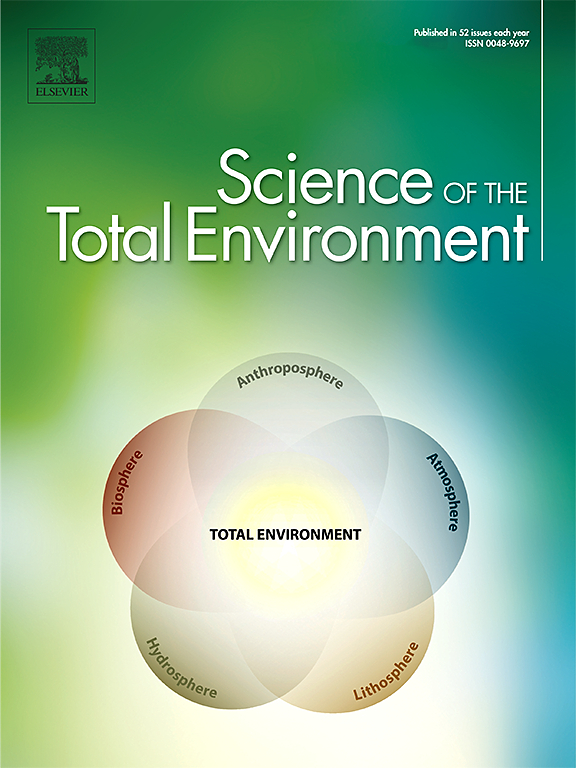Anthropogenic stressors that favour nuisance species. A study from environmental DNA in marine plankton samples
IF 8.2
1区 环境科学与生态学
Q1 ENVIRONMENTAL SCIENCES
引用次数: 0
Abstract
Anthropogenic stressors reduce marine biodiversity. Tolerant species may develop in altered areas where they occupy niches that native species are unable to use. Species of biosecurity concern, like invasive aliens or harmful microalgae, are especially successful in disturbed areas. Here, we employed multiple regression approach to investigate the relationship between the proportion of planktonic stages of invasives and anthropogenic stressors. Planktonic species were inventoried from environmental DNA on water samples from the Bay of Biscay. Key findings were that the proportion of invasives was associated with port and touristic activities that are vectors for biological invaders, and with industrial pollution, likely for their tolerance to disturbed environments. The proportion of toxic algae was correlated with port activity, reinforcing the role of maritime traffic as a vector of harmful microalgae. An increase of nuisance species is expected under the current growth of pollution in the ocean. Promoting awareness of biological invasions among maritime sectors and tourists, and controlling pollution, seem priorities for environmental conservation in this region and elsewhere.

求助全文
约1分钟内获得全文
求助全文
来源期刊

Science of the Total Environment
环境科学-环境科学
CiteScore
17.60
自引率
10.20%
发文量
8726
审稿时长
2.4 months
期刊介绍:
The Science of the Total Environment is an international journal dedicated to scientific research on the environment and its interaction with humanity. It covers a wide range of disciplines and seeks to publish innovative, hypothesis-driven, and impactful research that explores the entire environment, including the atmosphere, lithosphere, hydrosphere, biosphere, and anthroposphere.
The journal's updated Aims & Scope emphasizes the importance of interdisciplinary environmental research with broad impact. Priority is given to studies that advance fundamental understanding and explore the interconnectedness of multiple environmental spheres. Field studies are preferred, while laboratory experiments must demonstrate significant methodological advancements or mechanistic insights with direct relevance to the environment.
 求助内容:
求助内容: 应助结果提醒方式:
应助结果提醒方式:


